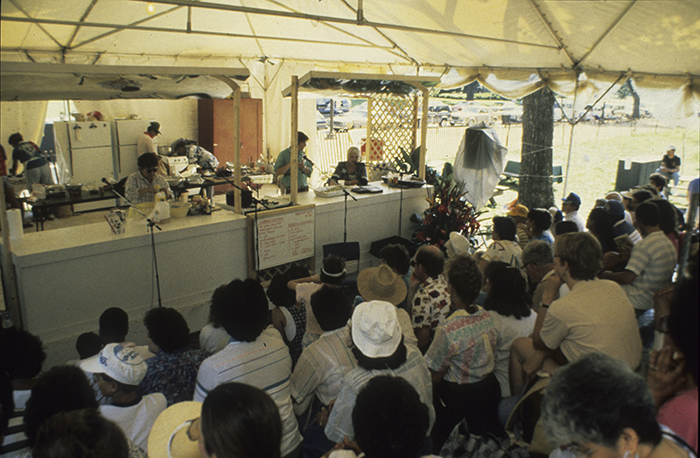Editor’s note: This recipe originally appeared in the 1991 Smithsonian Institution Press publication Smithsonian Folklife Cookbook, compiled by Katherine and Thomas Kirlin.
For Japanese and Okinawans, New Year’s is the most festive holiday, an occasion also to rectify financial and social debts.
Traditional Japanese cooks tend to prepare fish and chicken, rather than beef; to use seaweed, soybean products, pickled vegetables, rice, and noodles; and to prepare desserts that use sweetened rice or beans. Okinawans share many of these food traditions, too, but among this group pork prevails in the everyday diet and is often highlighted by such dishes as sparerib soup and pig’s-feet soup, delicacies traditionally served to family and friends on New Year’s Eve.
Sakibuni No Shiru (Okinawan Sparerib Soup)
Ingredients
1 lb spareribs, cut into 2-inch lengths
2 30-inch pieces kobu (kelp)
2 medium daikon (turnip), cut into 2 1/2×1-inch strips
11 cups water
1 tbsp dashinomoto (shirakiku soup stock)
Thumb-size piece garlic
Thumb-size piece ginger, lightly pressed
2 1/2 tsp miso
1 tsp salt
1/4 lb mustard cabbage, for garnish
Directions
1. Parboil spareribs for 5 to 10 minutes. Drain and rinse.
2. Wash and rinse kobu. Tie knots every 5 inches, then cut between the knots.
3. Bring 3 cups water to boil in a saucepan. Boil kobu for 5 minutes; add pinch of salt. Add daikon and cook for another 5 minutes. Drain and rinse in cold water.
4. Put 8 cups water in a saucepan and bring to a boil, adding dashinomoto. Add spareribs, garlic, and ginger; remove scum and bubbles as they appear on the surface of the water. Continue cooking on medium heat for 1 hour. Add kobu and daikon, and cook until kobu is soft, about 45 minutes. Add miso and salt to taste.
5. Parboil mustard cabbage in salt water, drain, rinse in cold water, and lightly squeeze out water. Use as garnish. Serves 6.
This text was adapted from the Smithsonian Folklife Cookbook’s chapter on Hawaii by Linda Paik Moriarty, and the recipe was submitted by Kay Kimie Hokama, an Okinawan American cook in the Hawaii program at the 1989 Folklife Festival.


